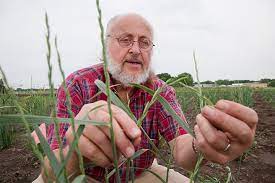
From ‘Weed’ to ‘Worthwhile’: Pennycress Makes Cover Cropping Viable
Corn and soybeans may be Minnesota’s mainstay crops, but they present a bit of an issue. Their growing seasons leave farm fields bare for long stretches of the year, leaving the soil to erode from the forces of wind, snow, and water.
On paper, the solution is clear: plant “cover crops” outside of the growing season that protect the soil’s fertility and prevent nutrients from leaching into groundwater and running off into nearby lakes and waterways. In practice, however, the method is extremely unpopular.
“There’s been this long history of trying to get cover crops on the land to cover that ground,” said Donald Wyse, PhD and professor in the Department of Agronomy and Plant Genetics. “But it costs money to do that, and there’s no direct annual return to the farmer from it.”
That’s starting to change, thanks to years of research led by Wyse and David Marks, PhD, professor of plant and microbial biology in the College of Biological Sciences.






